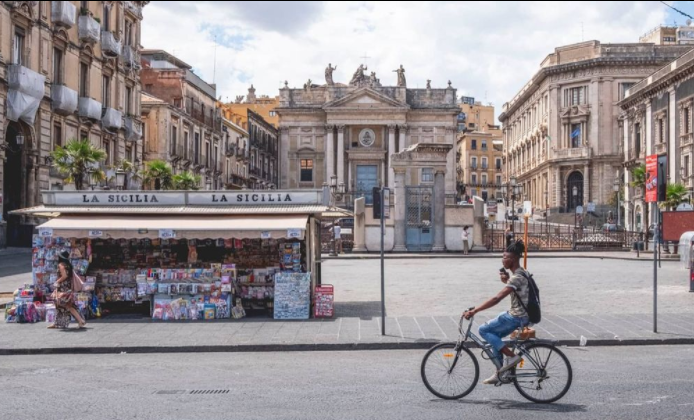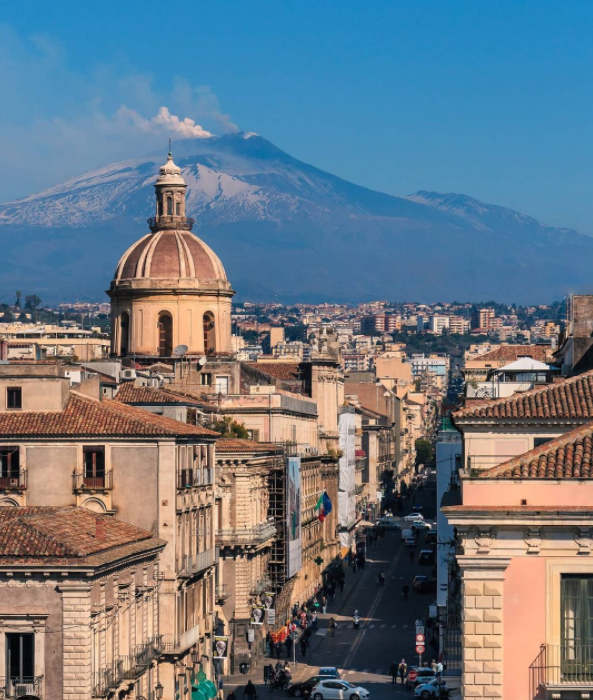Stroll along Via Etnea
The name of the main street of Catania, Via Etnea is of course a reference to the volcano that has been both a mother and a killer for the city. In 1693, a volcanic eruption led to the death of more than half of the inhabitants of Catania. That eruption was what gave birth to Via Etnea.
The Medieval cities were too chaotic for such wide streets. Along the main street leading to Etna, several churches and palaces were constructed. The procession honoring the patron Saint of Catania, St. Agatha, starts from the Church of Sant’agata al Borgo and ends in the Cathedral bearing Her name.
Many of the buildings here were designed by the chief architect of Catania Vaccarini. Vaccarini is the one who designed the facade of the Cathedral. Further North, is the University Square where Vaccarini designed the Palace of San Giuliano and the courtyard of the University. There are interesting sculptural ensembles on the square.
The first group is about the Pia brothers who escaped during the eruption of Etna. While they managed to escape the lava, their parents were still in danger. The brothers put them on their shoulders but the lava caught up with them. According to the legend the river of fire did not consume them, but split into two arms and rounded them, paying tribute to their loyalty.


Another column is dedicated to the legend of the paladin Uzet, who defeated the Saracen giant Ursini, after whom the castle of Catania is named. The third pillar is dedicated to a legendary fisherman whose ability to find treasures underwater was tested by Emperor Frederick. During the third test, the fisherman saw that Sicily stands on three pillars, one of which is quite worn out so he decided to bear the burden of the city like an Atlantean instead of a pillar. The fourth column is dedicated to a girl named Gammazita, who saved her honor in a confrontation with a French soldier by throwing herself into a well.
Moving further to Via Etna on the left side you will see the Basilica della Collegata with its Baroque facade. The 3-kilometer via Etnea ended at Piazza Stesicoro where the city gate of Catania was located. A monument to the local composer Bellini adorns the square. The entrance to Villa Bellini is located further along the road.
Moving further towards Etna, you will see the Botanical garden and the Church of Sant’Agata al Borgo, where the procession dedicated to Saint Agatha begins. Along the way, the procession will stop at the Church of Sant’agata la Vetere where St. Agata tied a shoelace on the way to prison, the Church of Sant’Agata al Carcere, where Agata was imprisoned and the Church of Sant’Agata alla Fornace, where according to legend the Saint was tortured with hot coals. However, this path does not follow via Etnea. The way along via Etnea is a visit to many (about 100) restaurants, cafes and bars, high-end retail shops and gelaterias.



